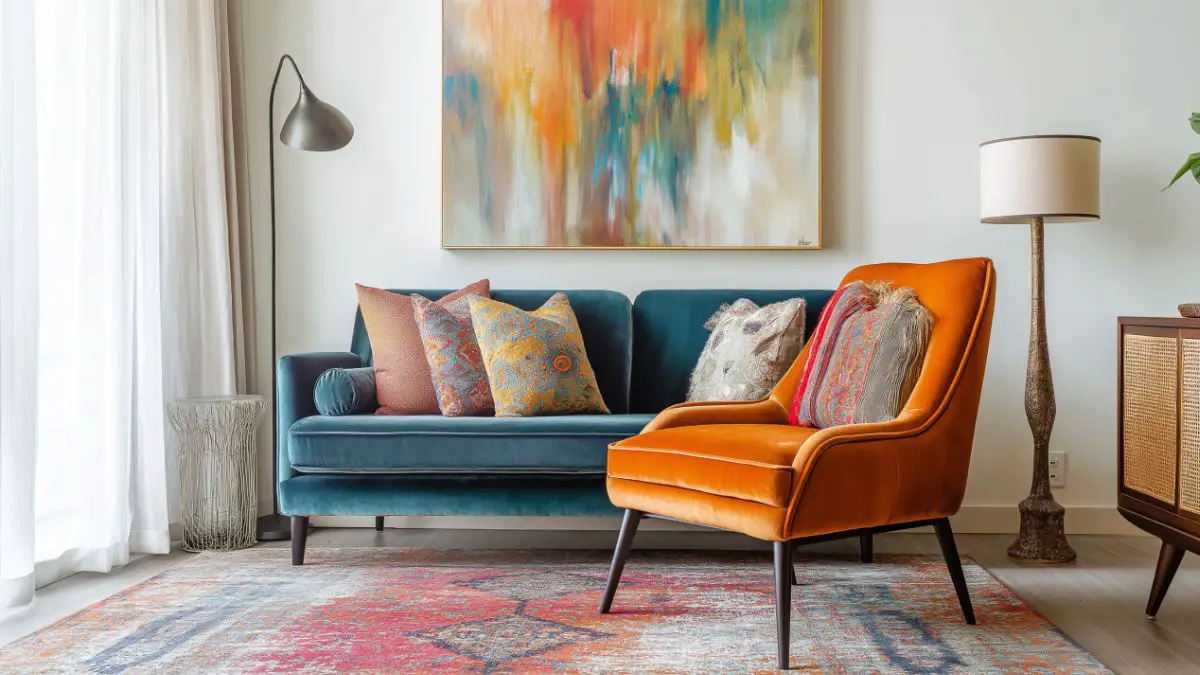Transform Your Home with Vibrant Color Design Ideas for Every Room
Table of Contents
Introduction
Color has the power to change how we feel in a space. It can energize a dull room, make small areas feel larger, and reflect personality in a way no neutral can. If your home is feeling a little flat or uninspired, introducing vibrant home color design ideas might be the refresh you need.
According to a 2024 Houzz survey, nearly 70% of homeowners who updated their interiors chose to incorporate bolder colors into at least one room—often starting with accents and gradually moving to walls and furnishings. Why? Because color brings life. Whether you gravitate toward rich jewel tones, warm earthy hues, or bright modern pops, vibrant color can add warmth, drama, or playfulness to your home.
In this post, we’ll explore smart, stylish ways to integrate bold colors into every room—without overwhelming your space or disrupting cohesion. From statement walls to colorful textiles and paint pairings, these home color design ideas are curated to help you create an intentional, elevated look. Whether you’re ready to dive into a dramatic makeover or simply looking to dip your toes into color, this guide offers practical tips for every level of boldness.
In-Depth Outline
1. The Psychology of Color in Home Design
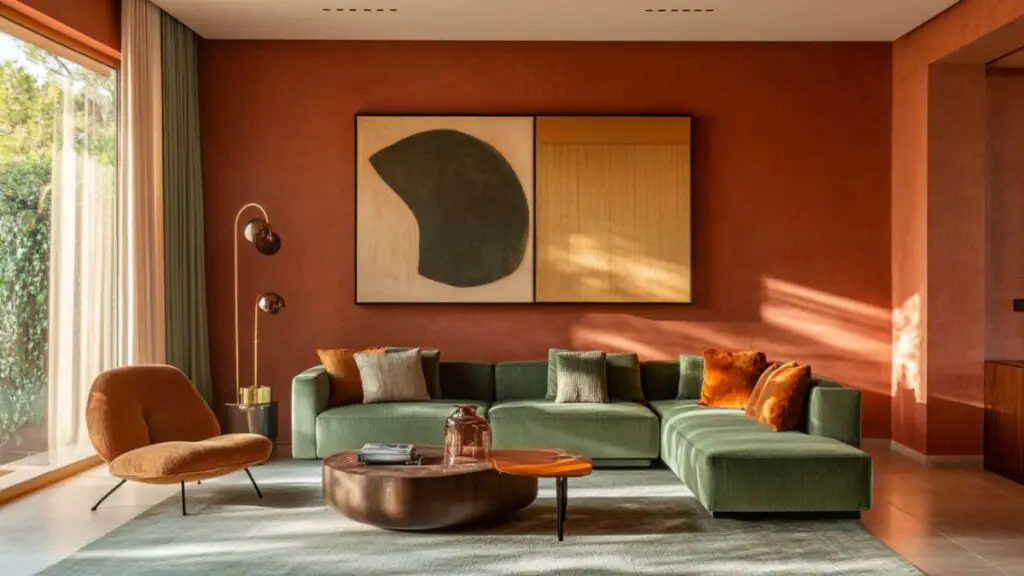
- Understand how different colors impact mood and energy.
- Choose colors based on how you want a room to feel—calm, cozy, creative, or lively.
- Consider natural lighting and room size when selecting hues.
- Use warm tones (red, terracotta) for energy; cool tones (blue, green) for calm.
- Neutrals with undertones of vibrant color can ease you into bolder design.
H3: Emotional Color Guide
- Blue: Tranquility and focus (great for bedrooms or offices)
- Yellow: Optimism and light (perfect for kitchens or entryways)
H3: Color Intensity and Its Effects
- Saturated shades energize; muted tones soothe.
- Balance bold tones with soft neutrals.
Table: Mood-Based Color Recommendations
| Desired Mood | Recommended Colors | Best Room Type |
|---|---|---|
| Calm | Soft blue, sage, greige | Bedroom, bathroom |
| Energized | Coral, mustard, teal | Kitchen, entry, office |
| Cozy | Terracotta, rust, plum | Living room, den |
2. Accent Walls and Bold Paint Choices
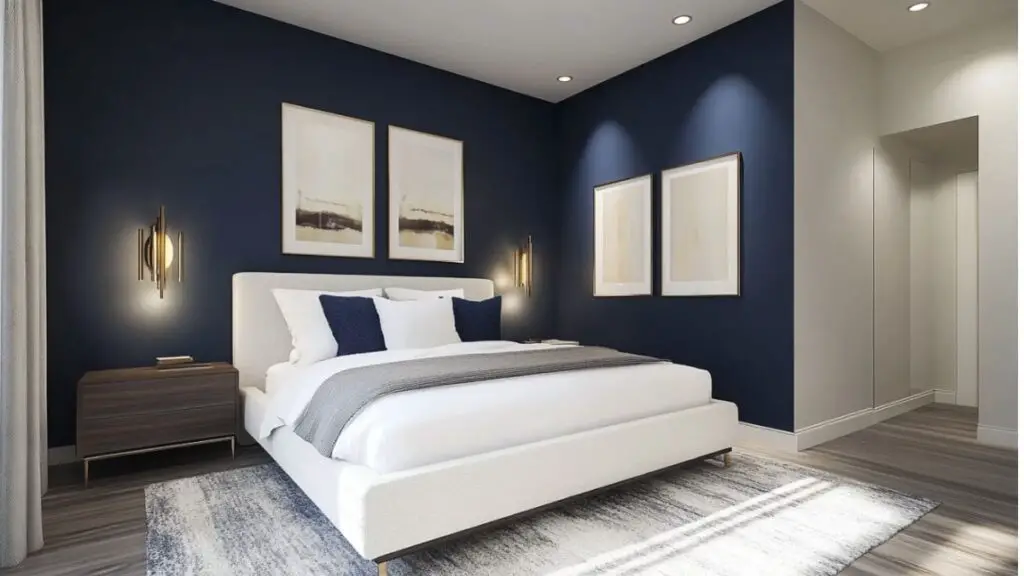
Introducing vibrant color doesn’t always mean painting an entire room. An accent wall is a smart way to make a statement while maintaining balance. Whether behind a bed, fireplace, or bookcase, a splash of bold paint adds dimension and personality.
Where to Use Accent Walls
- Behind the headboard in the bedroom
- Around a fireplace or TV wall in the living room
- Entryway wall for a strong first impression
- Home office background for Zoom-worthy design
Paint Color Ideas by Style
- Modern & Bold: Navy blue, forest green, or deep burgundy
- Warm & Earthy: Terracotta, cinnamon, ochre
- Playful & Energetic: Coral, chartreuse, cobalt
Tips for a Clean, Professional Finish
- Test swatches in natural light before painting
- Use painter’s tape for crisp lines
- Choose a finish that suits the vibe—matte for soft drama, satin for vibrancy
Table: Accent Wall Paint Selection Guide
| Style | Suggested Color | Finish Type |
|---|---|---|
| Minimalist | Charcoal, slate | Matte |
| Eclectic/Boho | Mustard, sage | Eggshell |
| Classic/Traditional | Navy, olive | Satin or Semi-gloss |
By limiting vibrant hues to one wall, you create a focal point that enhances without overpowering. It’s a great entry point for experimenting with color—and easy to repaint if your tastes evolve.
3. Room-by-Room Color Concepts
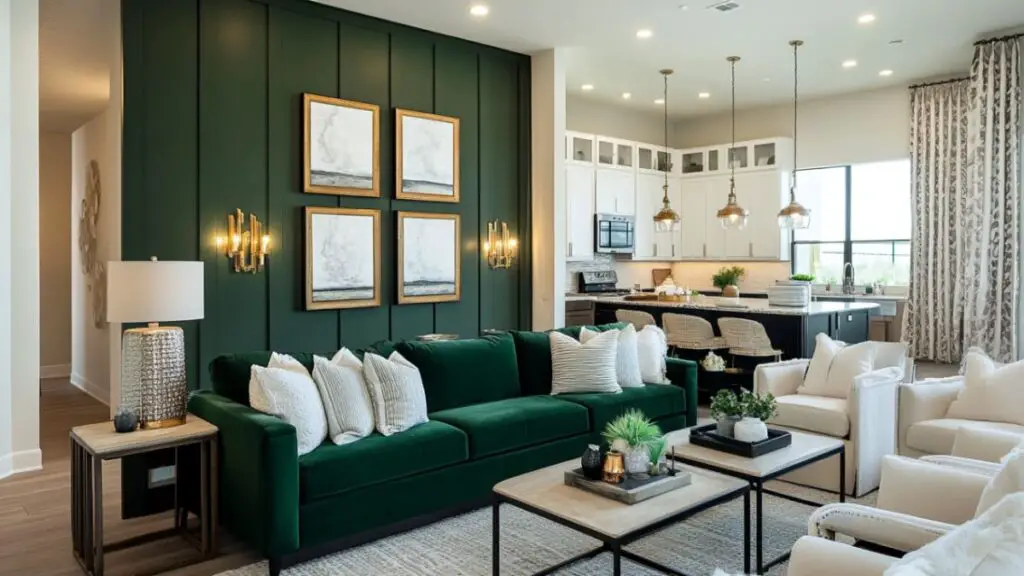
- Living Room: Jewel tones like emerald and sapphire create drama and luxury.
- Kitchen: Bright colors like yellow, coral, or teal add energy and warmth.
- Bedroom: Moody tones like plum or soft clay evoke coziness.
- Bathroom: Aqua, dusty rose, or even black for a spa-inspired retreat.
- Office: Deep green or blue fosters creativity and focus.
H3: Open Floor Plan Tips
- Use color zoning to define areas within a larger room.
- Repeat accents (like pillows or art) in coordinating hues for flow.
H3: Monochrome vs. Contrast
- Monochrome schemes feel clean and modern.
- Contrasting colors create energy and visual intrigue.
Table: Color Ideas by Room Type
| Room | Suggested Palette | Accent Pairings |
|---|---|---|
| Living Room | Emerald, clay, ivory | Brass, cream, black |
| Kitchen | Coral, white, wood tones | Greenery, ceramics |
| Bedroom | Plum, tan, soft white | Linen, leather, wood |
4. Using Color in Furniture and Decor
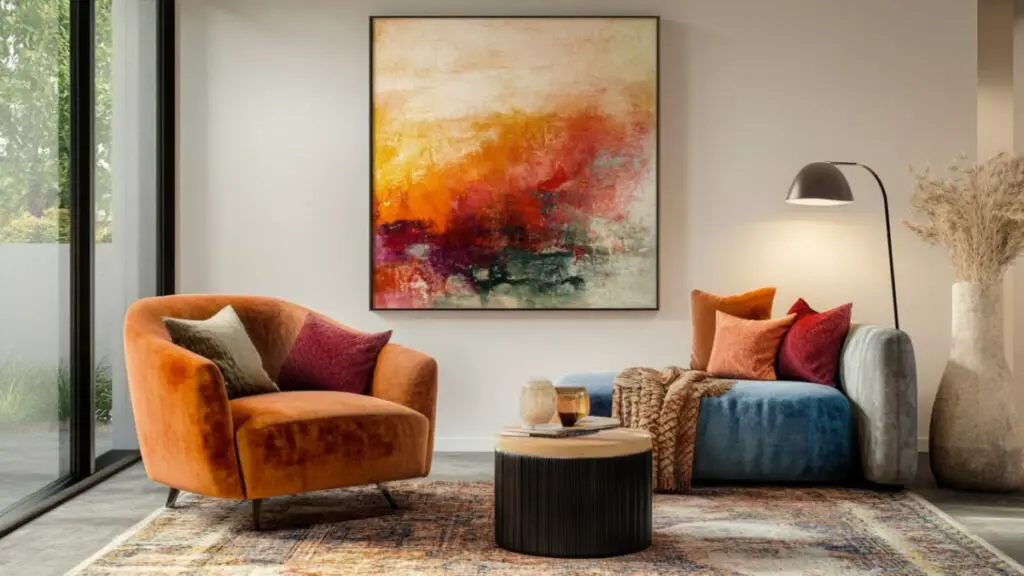
If painting walls feels like too big a leap, start with your furnishings and decor. Vibrant color accents through textiles, furniture, or artwork can be just as powerful.
Where to Add Pops of Color
- Throw pillows in jewel tones or bold patterns
- Velvet accent chairs in colors like mustard, teal, or blush
- Rugs with saturated motifs to anchor neutral rooms
- Statement lamps, vases, or art with unexpected hues
Creating Cohesion with Color
- Use the 60-30-10 rule: 60% base color, 30% secondary, 10% accent
- Tie color through multiple elements (e.g., rug + art + pillows)
- Mix in textures (linen, velvet, ceramic) to add depth
Table: Decor Elements & Color Impact
| Item | Color Impact | Styling Tip |
|---|---|---|
| Accent Chair | Strong focal point | Anchor in a corner |
| Throw Pillows | Easy seasonal swap | Vary textures and shapes |
| Area Rug | Defines the color palette | Balance with neutrals |
This approach is reversible and rental-friendly, making it perfect for anyone unsure about committing to permanent changes. Plus, it’s a chance to layer personality into the space while experimenting with trends.
5. Vibrant Color Combinations That Work
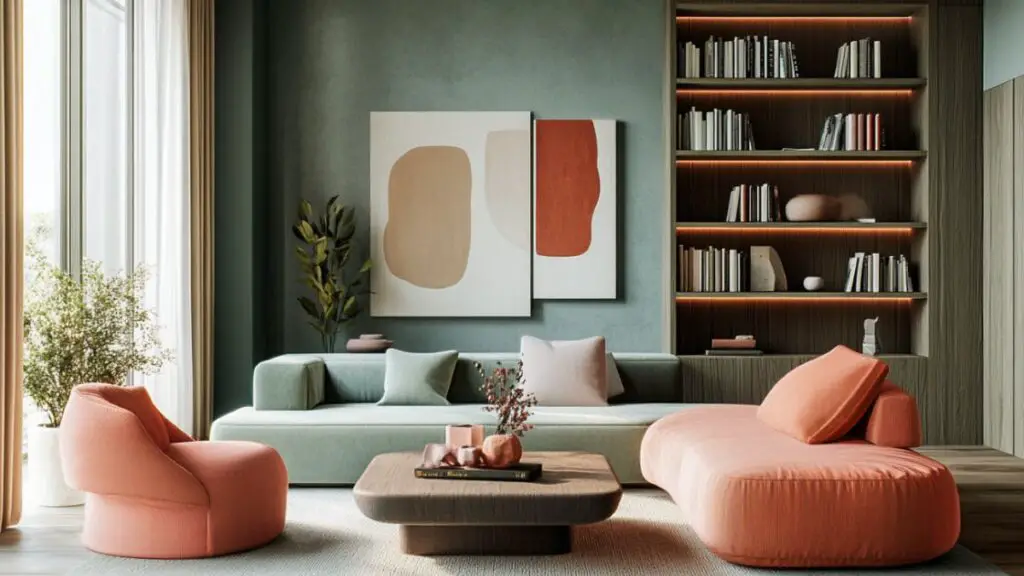
- Mustard + Navy = Modern and cozy
- Coral + Sage = Fresh and balanced
- Plum + Gold = Dramatic and warm
- Terracotta + Sky Blue = Earthy with a pop
- Olive Green + Blush Pink = Soft contrast with depth
H3: How to Pair Bold Colors
- Use a color wheel to choose complementary or analogous schemes.
- Choose one bold color and one neutral to keep balance.
- Let one color dominate and use the other for accents.
H3: Where to Apply Combos
- Walls + textiles
- Cabinetry + backsplash
- Furniture + art
Table: Vibrant Color Pairing Cheat Sheet
| Primary Color | Pairing Color | Best Use Case |
|---|---|---|
| Mustard | Navy | Living room accents |
| Coral | Sage green | Kitchen cabinetry |
| Plum | Gold | Bedroom, art, lamps |
6. Tips for Maintaining Balance with Bold Color

- Limit vibrant colors to 1–2 per room to avoid visual chaos.
- Offset rich tones with white walls, light wood, or neutral textiles.
- Repeat colors in small doses across multiple surfaces.
- Use color to highlight architectural details (molding, niches, built-ins).
- Incorporate plants or greenery to soften strong color palettes.
H3: When to Go Bold vs. Subtle
- Go bold in social or creative spaces.
- Stay subtle in relaxing areas like bedrooms or reading nooks.
H3: Testing Before Committing
- Paint swatches and observe through day/night lighting.
- Try peel-and-stick wallpaper in bold shades.
Table: Balancing Vibrant Color in Decor
| Method | Benefit |
|---|---|
| Add greenery | Softens intensity |
| Pair with neutrals | Prevents overwhelming visual load |
| Repeat accent tones | Creates harmony and cohesion |
Conclusion
Vibrant color has the power to completely transform your home—from injecting warmth and personality to creating zones that energize or relax. Whether you’re bold enough to go for an accent wall or prefer to start with colorful decor, there’s no one right way to introduce color into your space.
By understanding how color affects mood, choosing smart combinations, and applying it with intention, you can make any room feel fresh, personalized, and beautifully cohesive. Start with what excites you, and build from there—because when it comes to creating a home that feels like you, color is one of the most powerful tools in your design palette.

